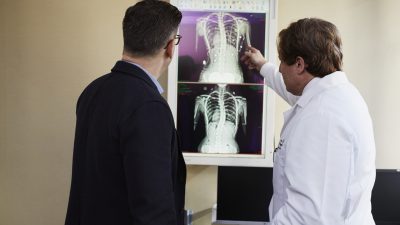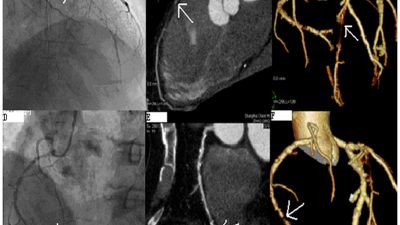Fallout from surgeons regarding the latest CAD revascularization guidelines reflects dissatisfaction with the guidelines development process and raises questions for cardiac quality consensus going forward.
The latest CAD revascularization guidelines from the American College of Cardiology (ACC), American Heart Association (AHA) and Society for Cardiovascular Angiography & Interventions (SCAI) were released on December 9, 2021. Pointedly absent were the endorsements of the American Association for Thoracic Surgery (AATS) and the Society of Thoracic Surgeons (STS), despite their involvement in development of the document.

Surgeon Groups Object to Latest CAD Revascularization Guidelines
In an editorial in the Annals of Thoracic Surgery, both groups cited three reasons for their refusal to endorse:
- downgrading of coronary artery bypass grafting (CABG) in the treatment of three-vessel coronary artery disease (CAD);
- lack of recognition of the superior long-term benefits of CABG vs percutaneous coronary intervention (PCI) in decreasing repeat reintervention and postprocedural myocardial infarctions; and
- awarding a Class of Recommendation (COR) I to the radial artery as a CABG conduit.
The downgrade of CABG, in question, was evidenced by the controversial ISCHEMIA trial, which critics argue was not powered adequately for survival, while older observational and randomized studies do show a clear survival benefit of CABG over PCI, according to lead author of the editorial, Joseph F. Sabik III, MD of the University Hospitals Cleveland Medical Center.
“The criticism is that these are old studies and aren’t applicable today, but we don’t understand downgrading without any evidence suggesting it [CABG] isn’t effective anymore,” he said to theheart.org | Medscape Cardiology.
Latest CAD Revascularization Guidelines Highlight Issues in Consensus Process
Ultimately, the controversy has implications for quality care as well as the process for generating quality consensus going forward, a process that quality-focused clinicians and administrators rely on for generating best practice consensus in their own organizations.
“The AATS and STS each had a single representative on the guidelines’ writing committee but note that the six remaining surgeons were chosen by the ACC and AHA. Surgeons were also in the minority and only a majority was needed to approve the guidelines,” reads the article in Medscape. “The surgical societies believe this points to a serious problem in the guideline-writing process that calls for ongoing discussion about how to achieve equitable representation by multidisciplinary experts across specialties,” summarizes an article by LA McKeown of TCTMD.
“I think if we can get the processes corrected on how we’re going to handle grievances that are felt fairly, and that the societies feel that they are equally represented, that’s how we want to move forward,” said Sabik to TCTMD. “We don’t want to not sign on to guidelines, because obviously we all just want to do what’s best for the patient… We felt we had no choice.”
In a related statement from the European Association for Cardio-Thoracic Surgery, the EACTS Board calls out this tension between best practice, multi-disciplinary care and the guidelines development process: “The collaborative Heart Team is central to the management of heart disease; it is difficult to understand how key members of the Heart Team are not involved in guidelines which play an essential role in our Heart Team discussions,” the statement reads.
Implications for Quality-Focused Organizations
When organizations don’t agree on the evidence, the onus falls on quality-focused organizations to build consensus in their own organizations, which can be difficult and require competencies that individual clinicians and administrators may not have.
That’s precisely why clinicians rely on organizations like the ACC to develop these guidelines equitably and generate widespread consensus.
When that fails, however, organizations can turn to supportive third-party accreditation to help. The supportive Accreditation for Cardiovascular Excellence process helps organizations build quality consensus among their operators to promote consistency and quality, and critically, it allows quality-leading organizations to learn from each other.
And being an expert, third-party resource focused on maintaining the highest standards of quality care, rather than a minimum standard of compliance, ACE is uniquely equipped to build consensus and promote clinician buy-in to organizational change.









